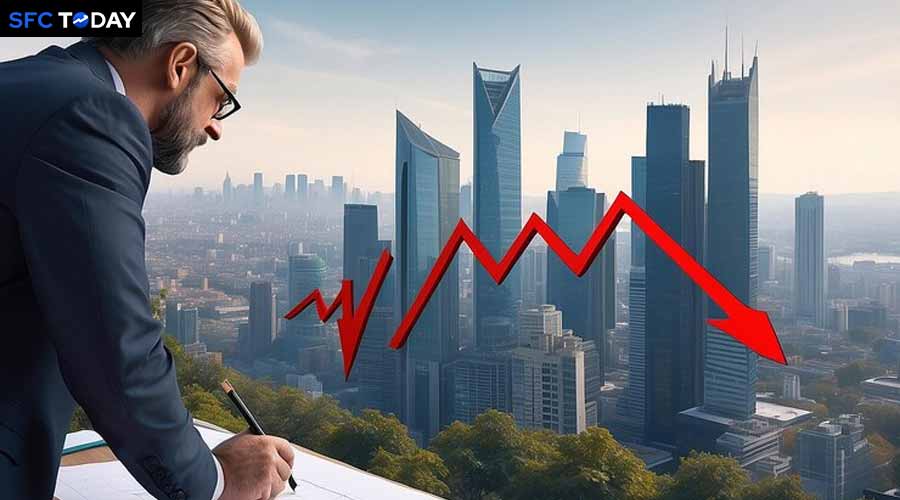Is a US recession looming? six key economic indicators to watch for early warning
As the U.S. stock market experienced a sharp decline last week, fears of a looming US Recession have intensified. The cryptocurrency market, often seen as a barometer of risk sentiment, also took a hit, plummeting from US$2.4 trillion to US$2.09 trillion since July 29.
Discussions about a potential Recession have gained momentum, with a growing consensus among analysts that a soft landing might be unlikely. This article delves into six key Economic Indicators that could signal an impending downturn in the US Economy. Understanding these indicators can help individuals and businesses make informed decisions about Business investment and economic planning.
Sharp Decline in U.S. Markets Sparks Recession Concerns
Over the past year, the narrative around the U.S. economy has been mixed. Some economists argued that the country had sidestepped a Recession, while others have been more pessimistic. However, the recent decline in U.S. equity markets has rekindled concerns about an economic slowdown. There are certain economic indicators which may show why these concerns may be warranted.
1. Economic Activity
The first and most straightforward indicator of a potential US Recession is a decline in economic activity. This is often measured through metrics such as Gross Domestic Product (GDP) growth, unemployment rates, and Business investment. Recent data paints a concerning picture: the latest jobs report indicated a rise in the unemployment rate to 4.3% in July 2024, the highest increase in years. Real GDP growth in the first quarter of 2024 slowed to 1.4%, a sharp decline from the 4.1% growth seen in the latter half of 2023.
- Why It Matters: A consistent decline in GDP and rising unemployment rates can signal weakening economic conditions. Reduced Business investment often follows, as companies cut back on spending due to uncertain economic prospects.
2. Financial Calamity
The U.S. experienced significant banking failures in 2023, with five of the largest collapses on record occurring within the year. The trend continued into 2024 with the failure of Republic First Bancorp. This financial instability has been accompanied by an increase in loan defaults and a decrease in consumer spending, partly due to rising interest rates and economic uncertainties. The surge in credit card debt, reaching all-time highs, reflects the growing financial strain on consumers.
- Why It Matters: Banking failures and increased consumer debt can lead to a tightening of credit conditions, making it more challenging for businesses and individuals to borrow money. This, in turn, can stifle economic growth and further contribute to a potential Recession.
3. Yield Curve Inversion
One of the most reliable predictors of a US Recession has historically been the inversion of the yield curve. This occurs when short-term interest rates exceed long-term rates, signaling investor concerns about future economic conditions. The U.S. bond market has been grappling with a prolonged yield curve inversion for over two years, raising alarm bells among economists and investors alike.
- Why It Matters: An inverted yield curve often precedes a downturn in economic growth and lending activity. It indicates that investors are seeking the safety of long-term bonds, anticipating a slowdown in the US Economy.
4. World Conflicts
Geopolitical tensions and conflicts have added another layer of complexity to the global economic landscape. Ongoing conflicts in regions like Israel, Gaza, and Ukraine have created widespread uncertainty and disrupted global trade. Sanctions and strained international relations have further exacerbated these issues, creating headwinds for the global and U.S. economies.
- Why It Matters: Geopolitical instability can lead to increased volatility in financial markets and disrupt supply chains. These factors can negatively impact Business investment and consumer confidence, increasing the likelihood of a Recession.
5. Inflation and High Interest Rates
The U.S. has been grappling with stubbornly high inflation, prompting the Federal Reserve to raise interest rates to their highest levels in 23 years. While these measures aim to cool the economy and bring inflation under control, they also pose risks. Higher interest rates can dampen consumer spending and Business investment, as borrowing costs rise.
- Why It Matters: Persistent inflation erodes purchasing power and can lead to reduced economic activity. High interest rates make borrowing more expensive, further slowing down economic growth and increasing the risk of a US Recession.
6. Forecasts and Market Sentiment
The views of leading economists and market momentum seem to be able to outdo the actual real economy. Key figures like Robert Kiyosaki, Peter Schiff, and economist Harry Dent have been very clear in their speculation about the upcoming economic recession. Although these forecasts certainly aren’t set in stone, they do point out a general idea that America may be on the brink of a recession or maybe even a serious depression.
- Why It Matters: Market sentiment is a determining factor in consumer and business activity. If a large number of investors and analysts are persuaded that the economy is going to hit the rocks, it can end up becoming a self-fulfilling prophecy as businesses conclude to reduce their business investment and the customers to then also contract their expenditure.
Conclusion
US economy becomes definitely threatened according to the six economic indicators i.e. falling economic activity, financial disasters, the yield curve inversion, geopolitical conflicts, inflation, and high interest rates as well as pessimistic forecasts. Although some analysis thinks the opposite, the US Recession is the way to go. The importance, and the need for businesses and individuals to stay on top of the latest information and making proper plans continue to increase with the growth of the uncertainties.
Comprehension of these indicators could be of great help in making a decision based on all possible aspects that will concern business investors, personal financiers, and the general economic strategies. The U.S. will be at a crossroad as it tries to avoid a depression or worse, it could be a recession. It is also vital to always watch out for these main indicators in the future if we want to prevent or minimize economic crises.







